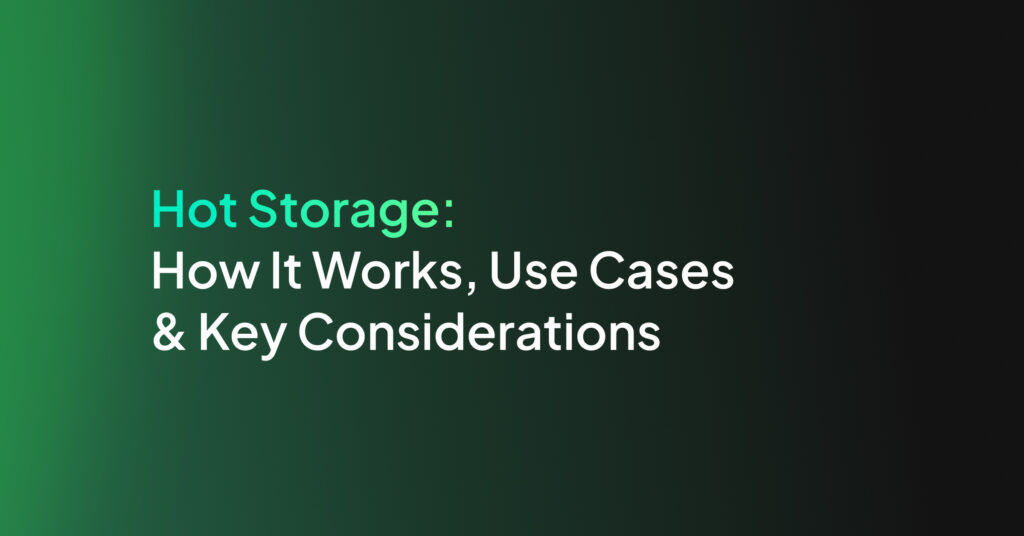Distributed Tracing in Microservices: A Practical Guide

Challenges in Monitoring Microservices
There are several aspects of microservices architecture that make it difficult to monitor.
Complexity of Distributed Systems
Microservices architectures introduce significant complexity due to their decentralized nature. Unlike monolithic systems, where all functionality resides in a single codebase, microservices divide functionality into smaller, independently deployable services. This distribution leads to several monitoring challenges:
- Dynamic topologies: Microservices environments often involve dynamic scaling, service discovery, and ephemeral containers. The topology of the system can change frequently, making it difficult to maintain an up-to-date view of service dependencies and interactions.
- Inter-service communication: Requests in a microservices system typically involve multiple network calls, which are susceptible to delays, failures, or misconfigurations. Tracking these interactions requires tools capable of capturing network traces and logs across services.
- Asynchronous processing: Many microservices use asynchronous communication patterns, such as message queues, to decouple services. While this improves scalability, it also complicates tracing as it becomes harder to follow the request lifecycle through the system.
Latency, Error Propagation, and Partial Failures
In microservices, latency issues often arise because a single request may traverse multiple services, each introducing delays due to processing time or network overhead. These latencies can compound, resulting in degraded performance for the end user.
Error propagation is another challenge. Failures in one service can cascade to others, causing unexpected disruptions. For example, if a downstream service becomes unresponsive, upstream services might time out or return incorrect results, leading to a chain reaction of failures.
Partial failures occur when some parts of the system fail while others continue to function. These failures are difficult to detect and resolve because they may not cause a complete outage, but still degrade the overall quality of service. Identifying and isolating such issues requires monitoring techniques and fallback mechanisms.
Difficulty in Pinpointing Performance Bottlenecks
Pinpointing performance bottlenecks in a microservices architecture is challenging due to the distributed and interdependent nature of services. Performance issues could originate from various sources, such as inefficient code, slow database queries, or network latency between services.
Traditional monitoring tools, which often provide only service-level metrics, are insufficient for identifying root causes. Distributed tracing fills this gap by offering a granular view of request flows, making it possible to detect slow or failing services. However, interpreting trace data requires expertise and often involves analyzing large volumes of logs and metrics to isolate the problematic component.
How Distributed Tracing Works in Microservices
Distributed tracing works by tracking requests as they propagate through a network of microservices. The process involves the following key steps:
- Unique trace and span identification: Each request is assigned a unique identifier, known as a trace ID. As the request interacts with different services, each interaction generates a “span,” which represents a single operation or step in the request’s lifecycle. Spans are linked to the trace ID, forming a hierarchy that outlines the request’s journey through the system.
- Instrumentation: Services are instrumented with tracing libraries that integrate with their code. These libraries capture metadata such as timestamps, service names, operation types, and status codes at various checkpoints. Instrumentation can be manual, using tracing APIs, or automated through frameworks and middleware.
- Context propagation: Trace context, including the trace ID and span ID, is propagated across services through request headers. This ensures continuity, enabling downstream services to associate their operations with the same trace.
- Data collection: Tracing systems collect the metadata from individual spans and aggregate it in a centralized storage. This data provides a detailed record of the request’s lifecycle, including timing, dependencies, and any errors encountered.
Visualization and analysis: The collected data is visualized in tools that generate timelines, dependency graphs, or flame charts. These visualizations help developers trace the request path, identify bottlenecks, and analyze failures. Some systems may offer AI-driven insights or anomaly detection to simplify debugging.
Benefits of Distributed Tracing in Microservices
There are several advantages to implementing distributed tracing in microservices:
- Enhanced visibility: Distributed tracing provides a view of how requests flow through the system, highlighting dependencies between services. This visibility is crucial for understanding system behavior and uncovering hidden issues.
- Faster issue resolution: By pinpointing the source of errors or performance bottlenecks, distributed tracing enables quicker troubleshooting. Developers can trace failed requests back to the exact service or operation responsible, reducing mean time to resolution (MTTR).
- Performance optimization: With insights into latency at each step, teams can identify and address inefficiencies, such as slow database queries or network delays. This leads to better resource utilization and improved system performance.
- Improved reliability: Tracing helps detect patterns of partial failures and cascading issues, allowing teams to implement fallback strategies. By understanding failure propagation, systems can be made more resilient to disruptions.
- Support for scalability: As microservices architectures grow, managing inter-service dependencies becomes increasingly complex. Distributed tracing scales with the system, providing consistent monitoring regardless of the number of services or interactions.
- Easier observability practices: Distributed tracing complements other observability tools like logs and metrics. Together, they provide a holistic view of the system, enabling better decision-making and proactive maintenance.
Related content: Read our guide to observability tools
Best Practices for Distributed Tracing in Microservices
Organizations can implement the following practices to ensure effective distributed tracing in a microservices environment.
Instrument All Critical Paths of the Application
To fully leverage distributed tracing, it’s critical to instrument all important paths within the application. These paths typically include APIs that handle user interactions, service-to-service communication, database queries, and interactions with external dependencies, such as third-party APIs. Missing even a single crucial step in the trace can create blind spots, making it hard to detect issues like bottlenecks or failed requests.
To ensure coverage, adopt tracing libraries that integrate with the frameworks and languages used across the microservices. For example, many modern frameworks provide out-of-the-box tracing support for HTTP handlers and database clients. If the application uses asynchronous processing, such as message queues or event streams, make sure that these components are also instrumented.
Use Consistent Trace and Span IDs Across Services
Without consistent identifiers, the request flow can become fragmented, leading to incomplete traces and missing dependencies in the analysis. To ensure continuity, generate a unique trace ID at the entry point of a request, such as at the API gateway or a load balancer. This trace ID should then be passed along with the request as it traverses different services.
The most common way to propagate trace information is through standard headers. For example, W3C Trace Context uses the traceparent header, while Zipkin and Jaeger rely on headers like X-B3-TraceId and uber-trace-id. All services in the architecture must follow the same header format and propagate this information correctly. For polyglot environments with services written in different languages, tracing libraries or frameworks must be compatible with the chosen standard.
Define Meaningful Span Names and Metadata
Span names and metadata are the primary ways for understanding the operations captured in a trace. When defining span names, aim for clarity and specificity. A span name like HTTP GET /user is far more useful than a generic name like HTTP Call. Similarly, database spans should include the type of operation being performed, such as DB Query: FindUserById.
Adding metadata to spans further enriches their value for debugging and analysis. Useful metadata includes request parameters (excluding sensitive data), error codes, execution times, and resource usage metrics like memory or CPU consumption. Avoid overwhelming the trace system with excessive metadata, which can increase storage costs and clutter visualizations.
Balance Trace Sampling Rates to Optimize Performance
Capturing data for every single request in high-traffic systems can be resource-intensive and costly. Sampling strategies help mitigate this by selectively tracing a subset of requests. The simplest approach is fixed-rate sampling, where a constant percentage of requests—such as 1% or 10%—is traced. This method works well for evenly distributed traffic patterns but may miss anomalies if they occur in low-frequency paths.
Dynamic or adaptive sampling provides a more advanced solution. For example, organizations can trace all requests that result in errors or high latency, while sampling normal requests at a lower rate. This ensures that critical issues are captured without overwhelming the tracing system.
Secure and Manage Trace Data Correctly
Trace data often includes sensitive information, such as user IDs, request payloads, or error messages, which makes securing this data a top priority. Begin by encrypting trace data both in transit and at rest to prevent unauthorized access. Use strong authentication and access controls to restrict access to tracing systems, ensuring that only authorized personnel and tools can view or modify trace information.
Anonymization and redaction of sensitive data are equally important. For example, avoid storing full user credentials or personally identifiable information (PII) in trace metadata. Use mechanisms like hashing or tokenization to obscure sensitive fields when they must be logged. Trace data retention policies should be carefully managed and avoid storing data indefinitely with clear retention periods.
Distributed Tracing with Coralogix
Coralogix sets itself apart in observability with its modern architecture, enabling real-time insights into logs, metrics, and traces with built-in cost optimization. Coralogix’s straightforward pricing covers all its platform offerings including APM, RUM, SIEM, infrastructure monitoring and much more. With unparalleled support that features less than 1 minute response times and 1 hour resolution times, Coralogix is a leading choice for thousands of organizations across the globe.





